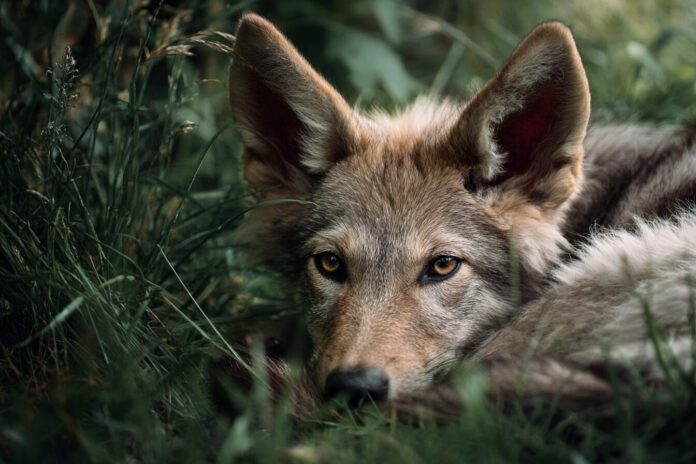The Promise and the Controversy
In a highly publicized announcement, Colossal Biosciences shocked both the scientific community and the public. Most importantly, the company declared the birth of three animals labeled as ‘de-extinct’ dire wolves. Using advanced genome engineering techniques and preserved ancient DNA, Colossal’s team edited the genomes of modern gray wolves and then employed domestic dog surrogates to bring these engineered creatures to life. Therefore, the resulting pups—Romulus, Remus, and Khaleesi—have become symbols of what some see as a revolutionary leap in de-extinction technology.
Because the announcement resonated across multiple media platforms, it attracted significant attention from both proponents and skeptics. Newspapers, scientific blogs, and mainstream outlets like TIME have been abuzz with the groundbreaking yet controversial claims. Moreover, the discussion highlights deeper ethical and practical questions about whether de-extinction is a viable conservation strategy or merely a demonstration of technological prowess.
Besides that, the narrative goes beyond the immediate excitement by touching on broader conservation efforts. Advocates argue that regenerating extinct traits may serve as a powerful tool in ecological restoration, while critics caution that such methods might divert attention and resources from existing endangered species. Consequently, these de-extinction endeavors have sparked a critical examination of how science is communicated to the public.
How Colossal Approached the ‘De-extinction’ Process
The methodology adopted by Colossal was both complex and innovative. Initially, the company sequenced the ancient genome of the extinct dire wolf (Aenocyon dirus) to identify key genetic markers distinct from those found in modern gray wolves. Because this step was crucial, scientists applied CRISPR and similar genome editing tools to modify up to 20 strategic sites. Most importantly, 15 of these edits were intended to mirror the genetic sequences unique to the dire wolf, thereby setting the stage for what Colossal termed as a de-extinction event.
Furthermore, the process involved cloning the edited cells and implanting them into surrogate mothers. This highly technical approach was promoted as a milestone for synthetic biology, with Colossal presented as a forerunner in the emerging field of de-extinction. Therefore, the achievement was not only technical in nature but also symbolically significant, raising questions about the future of biodiversity restoration.
Additionally, Colossal Biosciences has leveraged its narrative to push the boundaries of what is considered possible in genetic engineering, inspiring further discussions among environmentalists and technologists alike.
The Scientific Pushback: Are They Really Dire Wolves?
While the initial claims generated excitement, the scientific community has been quick to voice reservations. Most experts argue that these gene-edited animals are more accurately characterized as modified gray wolves rather than true dire wolves. This sentiment is echoed by numerous geneticists and evolutionary biologists who contend that the relatively few genomic edits represent only a small fraction of the overall genetic heritage of the extinct dire wolf. Consequently, the designation of these animals as ‘de-extinct’ is seen by many as an overstatement.
Because many characteristics of the dire wolf extend beyond selected genetic markers, the debate centers on what truly defines a species. As noted by critics like Paul Knoepfler, this approach creates a distinction between a full resurrection and a hybrid experiment. Most importantly, it raises questions about species identity, as highlighted in discussions on the Avian Hybrids blog, where the nuances of species concepts are explored in detail.
Furthermore, critical voices in the genetic community stress that this effort may blur the lines between scientific achievement and marketing hype. Because the alterations cover only selected aspects of the dire wolf genome, it is argued that calling these animals true representatives of the extinct species is misleading.
Why This Debate Matters for Conservation and Science
Most importantly, the controversy surrounding Colossal’s dire wolves is much more than a naming dispute. It directly impacts how de-extinction and conservation strategies are perceived by the public and policymakers. Because overhyping scientific breakthroughs can lead to misplaced public expectations, the accuracy of terminology becomes critical. Therefore, understanding the extent and limitations of these genomic edits is crucial for evaluating future projects in conservation biology.
Moreover, this debate prompts a reassessment of resource allocation in conservation. Critics argue that funds and attention may be better utilized to protect existing endangered species rather than pursuing the resurrection of extinct ones. Besides that, the discussion underscores broader ethical dilemmas, such as the potential ecological risks and unforeseen consequences of introducing genetically engineered animals into wild ecosystems.
In addition, the scientific community emphasizes that transparency in communication is key. Because clear and precise language helps maintain public trust, researchers advocate for a cautious approach when presenting groundbreaking but complex scientific advancements. Therefore, ensuring that terms like ‘de-extinct’ are rigorously defined is essential for fostering informed debates.
The Road Ahead for De-extinction Science
Despite substantial criticism, Colossal’s project represents a significant technical milestone. Because it integrates state-of-the-art genome editing with cloning, the work has ignited global conversations about the future of de-extinction and biodiversity restoration. Most importantly, it challenges us to reexamine our relationship with extinct species and to deliberate on the boundaries of synthetic biology.
Furthermore, the implications of this experiment extend into practical domains of conservation. As funding and technological expertise continue to grow, similar projects might pave the way for future efforts to revive species lost to extinction. Besides that, the discourse generated by these events is urging regulatory bodies and ethical committees to reconsider guidelines for de-extinction initiatives.
In summary, while the engineered pups may not be perfect replicas of dire wolves, they undeniably serve as a catalyst for important discussions about species identity, scientific responsibility, and the future of ecological restoration. For a more in-depth look at these multifaceted issues, readers can explore additional analyses in Nature and other sources.



